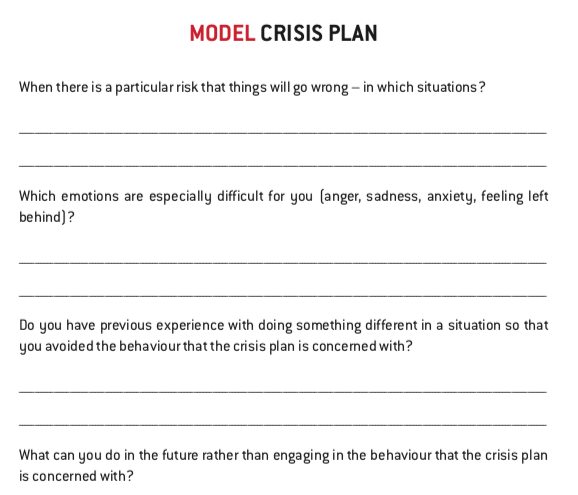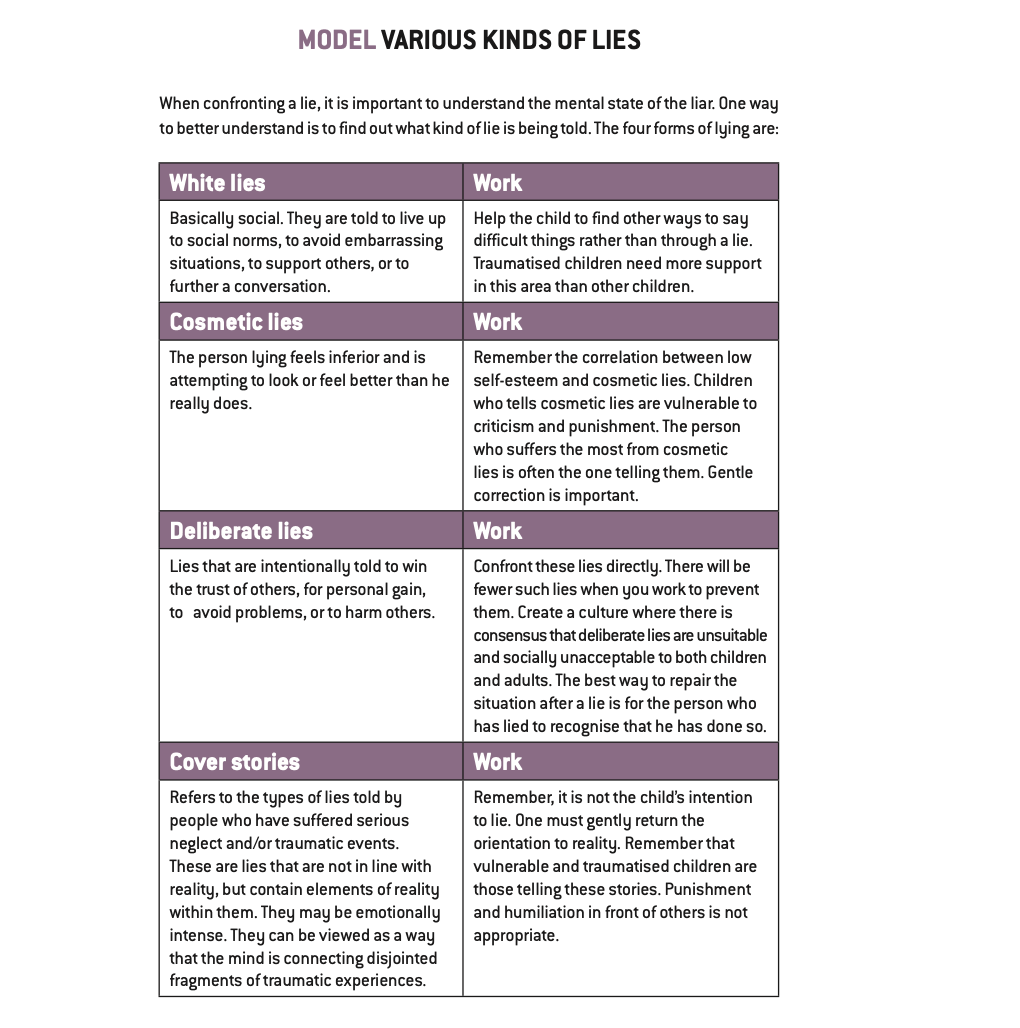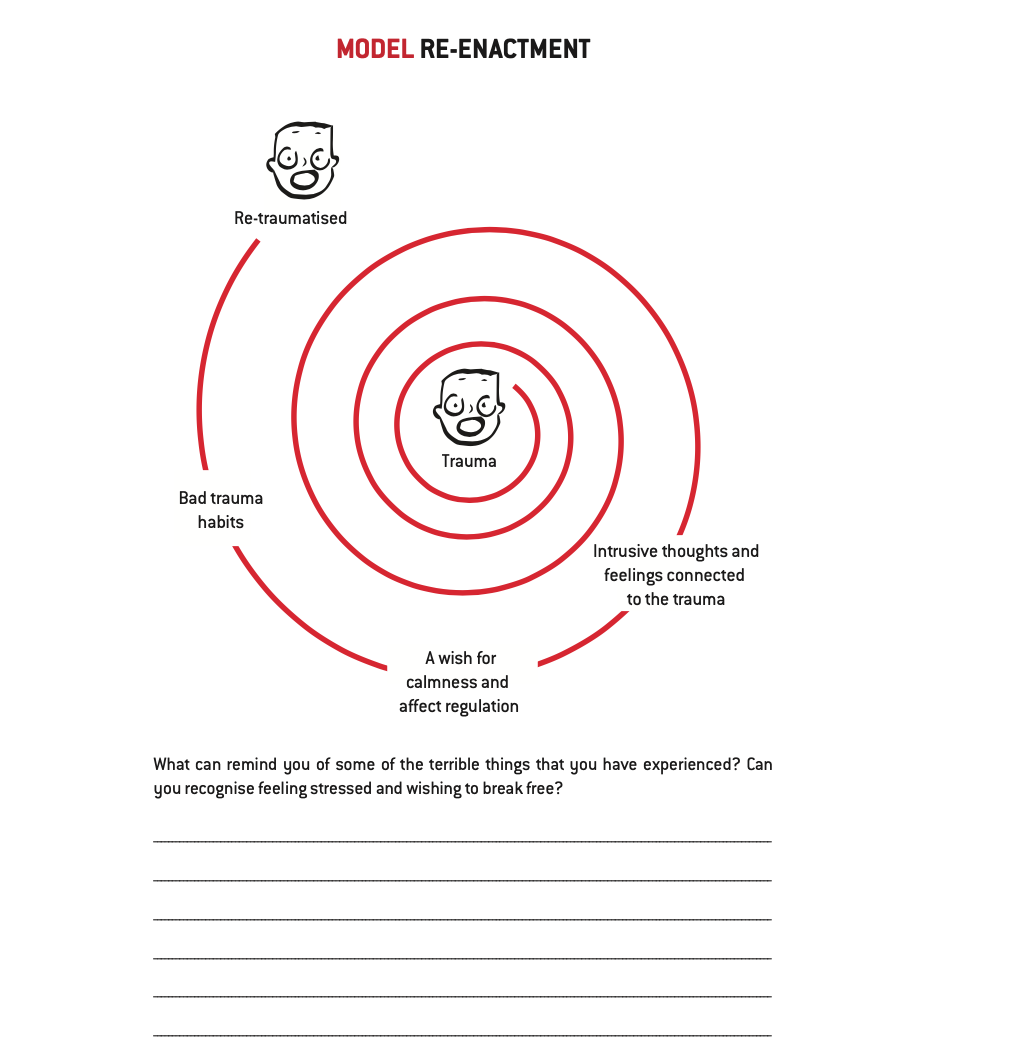Mentalization exercises
Here you can find selected exercises and models relevant to mentalization. All the following information is material originating from The Mentalization Guidebook. The full exercises and models as well as further explanations can be found in the book.

Dream Journey
The dream journey can be used to help a child gain a sense of internal security. The child is guided into its own Dream Journey during the readout and into a pleasant place in which it is possible to find ones own resources on the way back to the present moment.
View and download the exercise for free in pdf here.
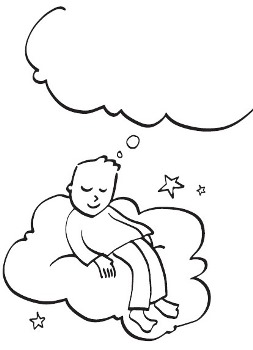

The Open Thermometer
Let the Open temperature gauge be the tool you use in the moment – to assess whether you are able your resources and Mentalizing Capacity – before entering into a mentalizing interaction. It can be used by professionals and privateers as well, when in need to asses, if ones mentalizing stance is Open as an platform for a constructive and mentalizing dialogue.
View and download the exercise for free in pdf here.
My Boundaries
My boundaries is a simple exercise to do with the child. The child is encouraged to draw his or her boundaries in the figure in relation to different people in the child’s life. An example of different kinds of boundaries are provided to help the child.
View and download the exercise for free in pdf here.

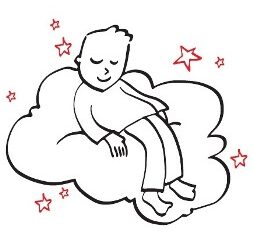
Exercise for falling asleep
This exercise is a guided read-out that will help the child or grown-up to fall asleep.
View and download the exercise for free in pdf here.
Mentalization models
Normal Reactions After Experiencing Something Violent
The model “Normal reactions after having experienced something violent” explains the four normal reactions to trauma. The model is a useful visual tool when talking to children about post-traumatic stress reactions.
View and download the exercise for free in pdf here.
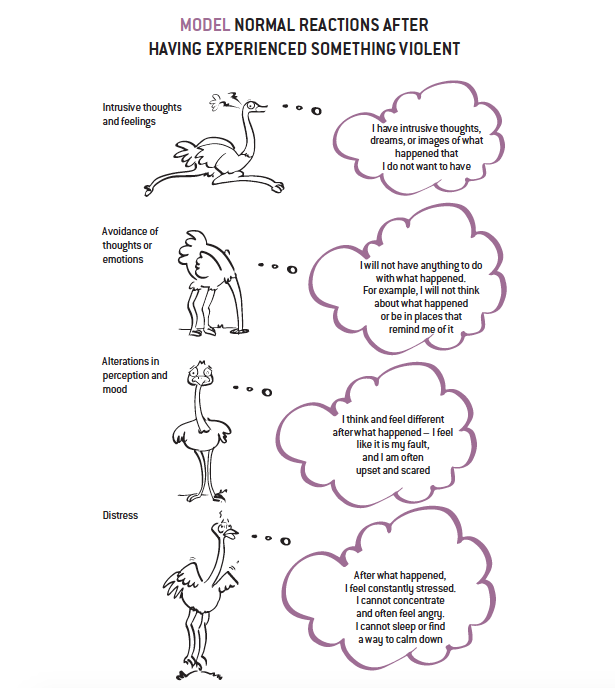
MacLean's Triune Brain
The model “MacLean’s triune brain” is based on human evolutionary development and describes what happens when a person is traumatized. In the model the brain is divided into a reptile brain, a mammalian brain, and a thinking brain. The model can help to understand why primitive parts of the brain often take over when a person is traumatized, and there is no access to the more rational parts of the brain.
View and download the exercise for free in pdf here.
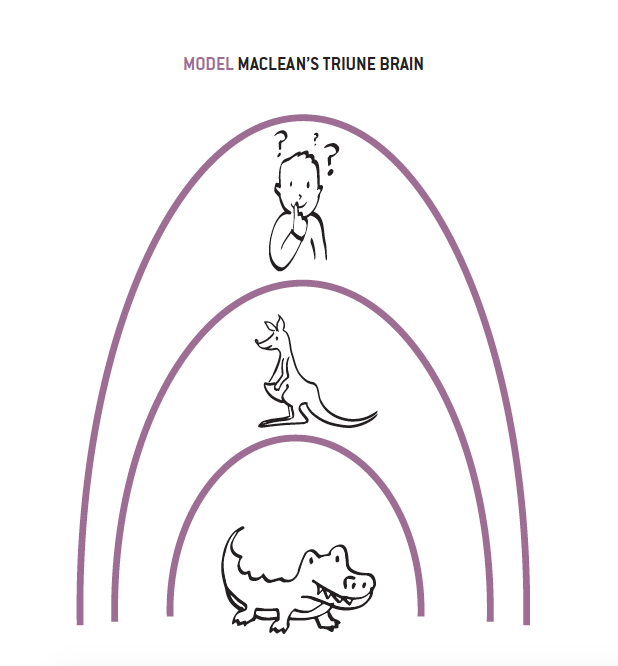
The "Fight, Flight or Freeze" Model
When a person is terrified, his or her reactions will largely be based on automatic reflexes outside of conscious control. The model shows the fight, flight or freeze reactions that can be constructive in a dangerous situation but will entail problems if the reactions continue after the danger has passed.
View and download the exercise for free in pdf here.
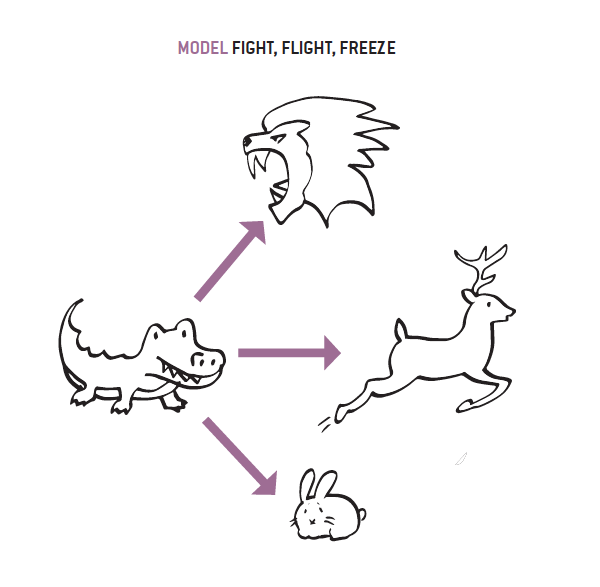
The Mentalization Model
Mentalization is a mental activity, concerned with perceiving and understanding one’s own behaviour and the behaviour of others based on mental conditions or states. The model helps creating an illustration of what mentalization is.
View and download the exercise for free in pdf here.
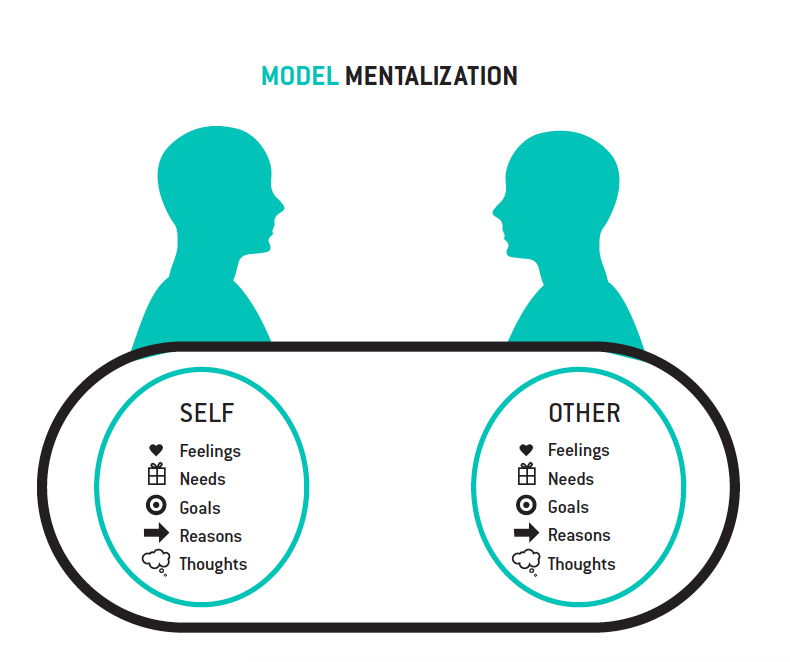
Mentalization Failure
Mentalization failure occurs when one is no longer able to focus on one’s own mental state or that of the other person. The model is a good way to talk about one’s own destructive behaviour in a more objective and detached way.
View and download the exercise for free in pdf here.
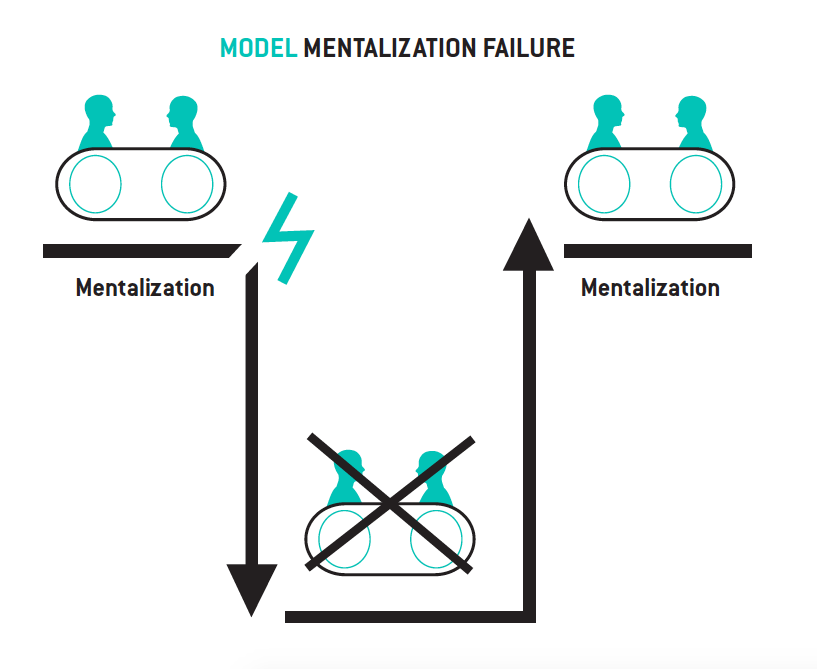
The 90/10 Response
When the brain has been exposed to something extremely unpleasant or trauma, it perceives the present differently emotionally. The brain experiences, senses, and catalogues experiences that are happening “here and now” based 90 per cent on what happened in the past and only 10 per cent on what is happening here and now.
View and download the exercise for free in pdf here.
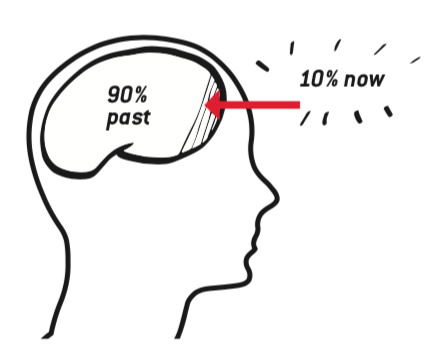
The Victim-Rescuer-Persecutor Triangle
The victim–rescuer–persecutor triangle may be helpful in understanding which positions a child or adult, who has experience in engaging in such transactional positioning, places themselves and others in. It is non-mentalizing to predominantly position oneself as victim, rescuer, or persecutor.
View and download the exercise for free in pdf here.
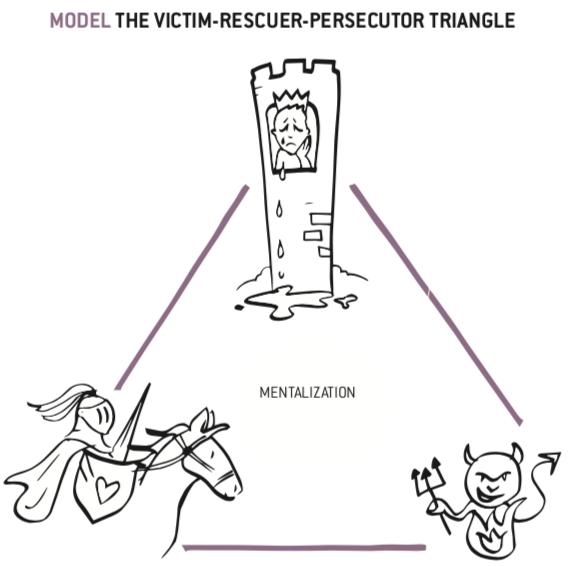
Crisis Plan
Mentalization-based teaching works with emotion regulation through the composition of crisis plans. A crisis plan is key as it provides opportunities for support with self-regulation and help when emotions are too intense and difficult to regulate. Developing a crisis plan is a task of mentalizing itself.
View and download the exercise for free in pdf here.
